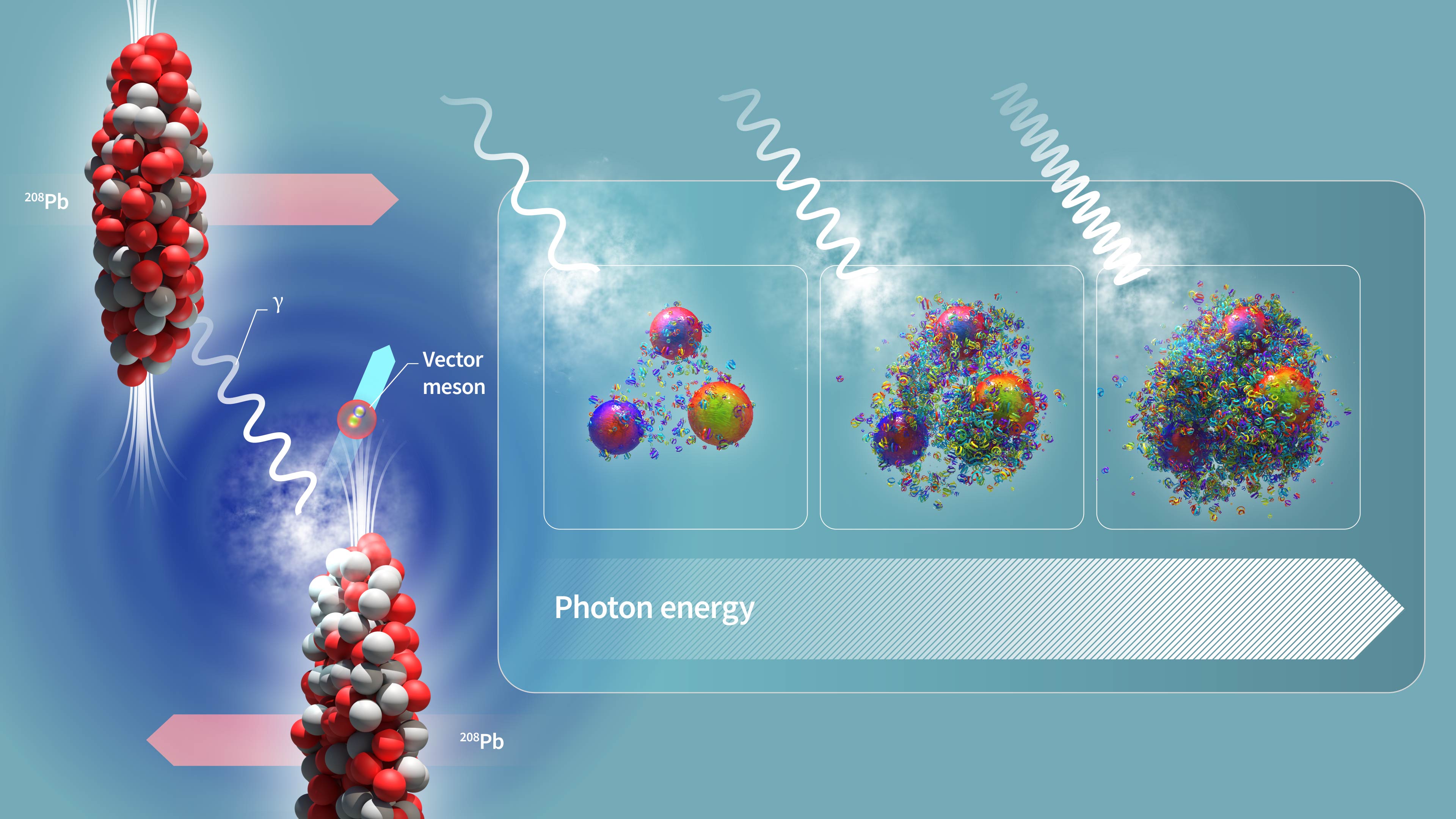
Illustration of an ultra-peripheral collision where the two lead ion beams at the LHC pass by close to each other without colliding. Photons emitted from one beam strike the other, producing electromagnetic interactions. The structure of the gluonic matter in the nucleus gets further exposed when probed by higher energy photons. (Image: CERN)
In the Large Hadron Collider, proton and lead beams travel close to the speed of light. They carry a strong electromagnetic field that acts like a flux of photons as the beam moves through the accelerator. When the two beams at the LHC pass by close to each other without colliding, one of the beams may emit a photon of very high energy that strikes the other beam. This can result in photon-nucleus, photon-proton, and even photon-photon collisions. The ALICE collaboration studies these collisions to investigate protons and the inner structure of nuclei, and has recently released new results on this topic at the LHCP 2023 conference.
Photons are ideal tools to study the interior of nuclei. Usually when a photon collides with a nucleus, two gluons (force carriers of the strong interaction) are exchanged, which results in the production of a quark-antiquark pair. Researchers further distinguish two different classes of these collisions: when a photon interacts with the whole nucleus (a coherent collision), and when a photon interacts with a single nucleon inside the nucleus (an incoherent collision).
Inside nuclei, scientists look for high numbers of gluons, which indicate high levels of gluon density. Theoretical models suggest that the gluon density inside nuclei increases when they approach the speed of light. If the density increases enough, the nucleus will become saturated with gluonic matter, meaning that the number of gluons in the nucleus cannot increase any further. Directly probing gluonic saturated matter is one of the main outstanding challenges in the field of strong interactions, and observing it could lead to further insight into the inner structure of protons and nuclei.
If a charm quark-antiquark pair is produced in a photon-nucleus collision, this is known as J/ψ meson production. Scientists study how coherent J/ψ production varies with photon energy in order to look for gluon saturation effects. As the photon energy increases, it becomes easier and easier to "see" the gluonic matter inside the nuclei. The new ALICE results on J/ψ production using LHC Run 2 data cover a larger momentum range than previous measurements from Run 1, and are in line with expectations of gluon-saturation models.
Incoherent collisions offer the opportunity to study geometrical configurations of the quantum fluctuations in the internal structure of the proton. The ALICE collaboration achieves this by studying the distribution of momentum that is transferred to the J/ψ meson. In a new study, the collaboration has been able to show that this momentum transfer can only be described when areas of saturated gluonic matter, called gluonic hotspots, are introduced into the models.
The ALICE collaboration will continue to investigate these phenomena in LHC Runs 3 and 4, where high-precision measurements with larger data samples will provide more powerful tools to better understand the role of saturation and gluonic hotspots.
Further reading:
- ALICE Collaboration, 2023 https://arxiv.org/abs/2305.06169
- ALICE Collaboration, 2023 https://arxiv.org/abs/2304.12403
- ALICE Collaboration, 2023 https://arxiv.org/abs/2304.10928
- ALICE Collaboration, 2023 https://arxiv.org/abs/1809.03235
- https://alice-collaboration.web.cern.ch/LHCP2023






